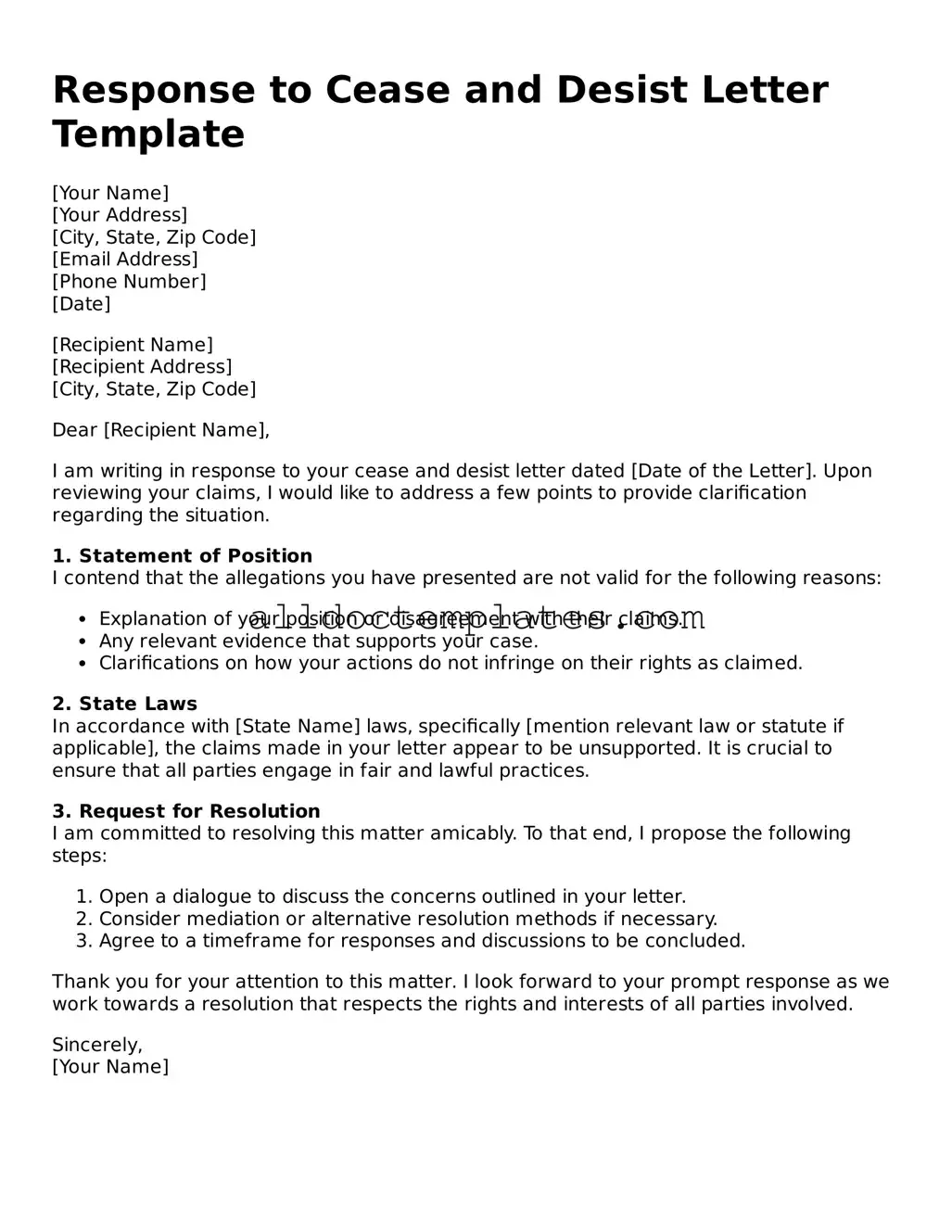Response to Cease and Desist Letter Template
[Your Name]
[Your Address]
[City, State, Zip Code]
[Email Address]
[Phone Number]
[Date]
[Recipient Name]
[Recipient Address]
[City, State, Zip Code]
Dear [Recipient Name],
I am writing in response to your cease and desist letter dated [Date of the Letter]. Upon reviewing your claims, I would like to address a few points to provide clarification regarding the situation.
1. Statement of Position
I contend that the allegations you have presented are not valid for the following reasons:
- Explanation of your position or disagreement with their claims.
- Any relevant evidence that supports your case.
- Clarifications on how your actions do not infringe on their rights as claimed.
2. State Laws
In accordance with [State Name] laws, specifically [mention relevant law or statute if applicable], the claims made in your letter appear to be unsupported. It is crucial to ensure that all parties engage in fair and lawful practices.
3. Request for Resolution
I am committed to resolving this matter amicably. To that end, I propose the following steps:
- Open a dialogue to discuss the concerns outlined in your letter.
- Consider mediation or alternative resolution methods if necessary.
- Agree to a timeframe for responses and discussions to be concluded.
Thank you for your attention to this matter. I look forward to your prompt response as we work towards a resolution that respects the rights and interests of all parties involved.
Sincerely,
[Your Name]
